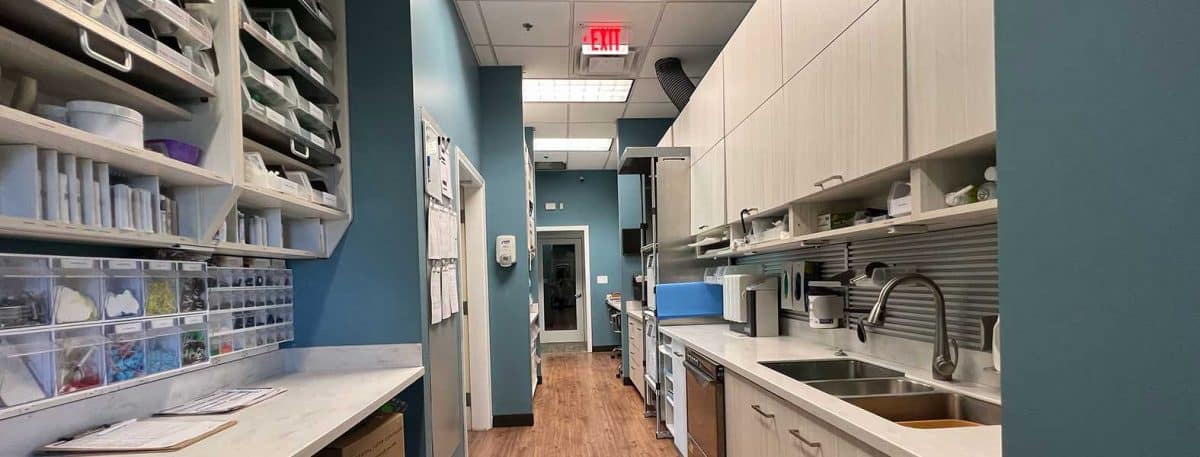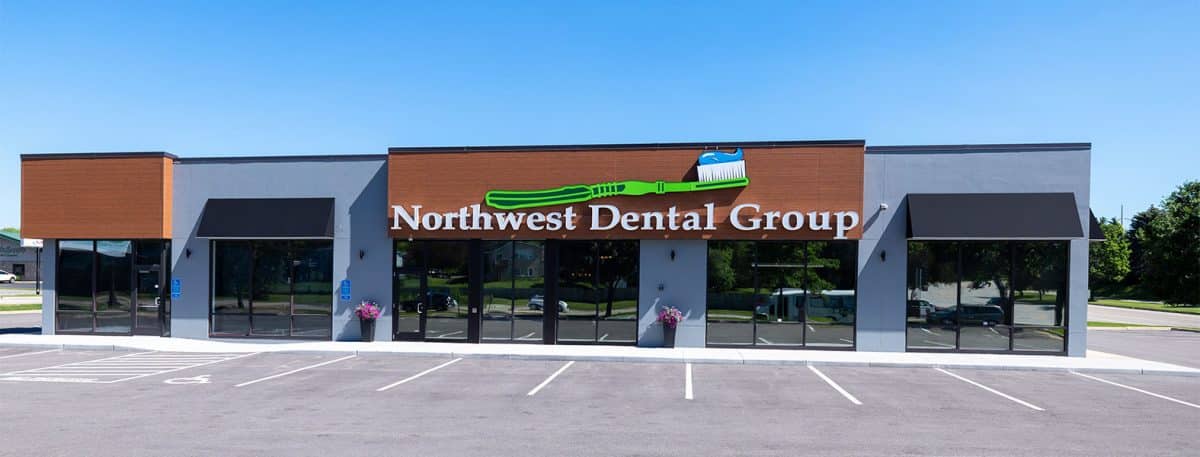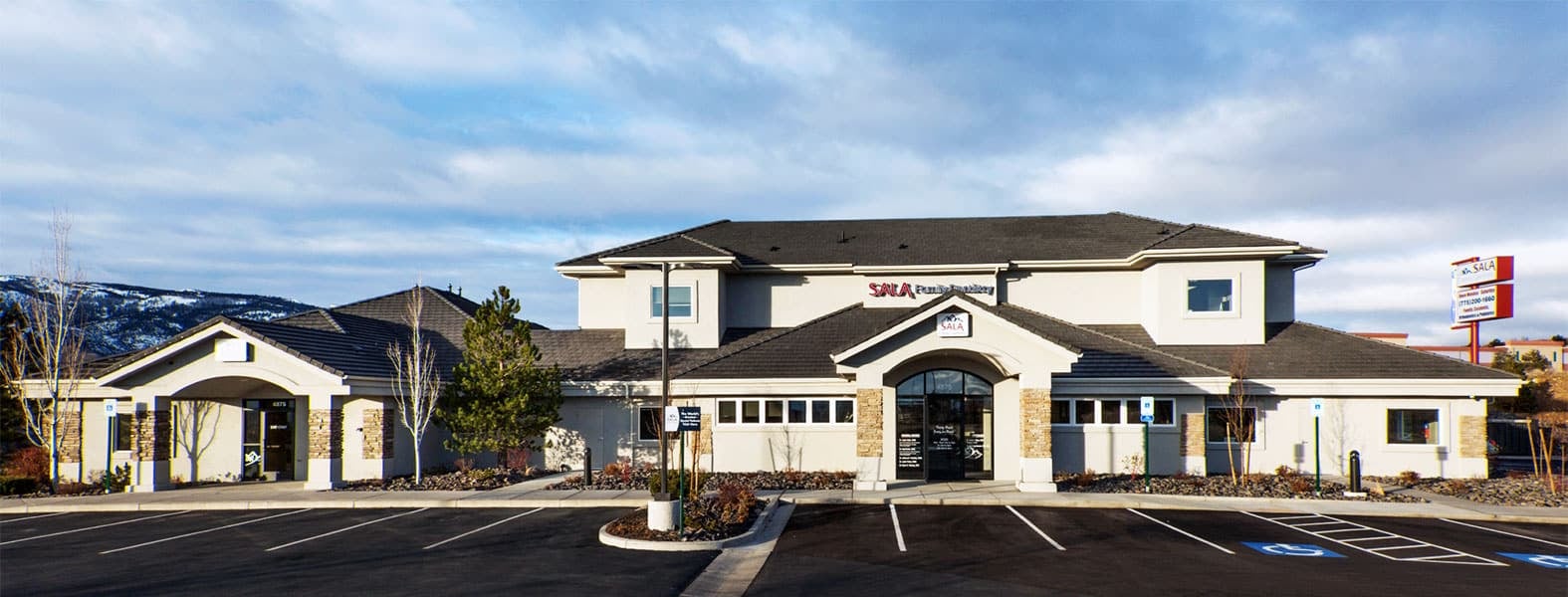Choosing the Perfect Design Style for Your Dental Office
December 18th, 2024
6 min. read

Designing a dental office is more than just picking colors and furniture—it’s about creating an inviting atmosphere that reflects your brand, comfort, and the unique needs of your clients. Whether you're starting from scratch or renovating, the first step is identifying your aesthetic. To make this easier, we’ve developed a quick Design Preferences Quiz. It only takes two minutes and can help you uncover your ideal style.
Here’s an overview of popular interior design styles to inspire your dental office transformation.
Farmhouse Style

Farmhouse style is generally separated into two distinct design aesthetics: traditional farmhouse and modern farmhouse. The classic farmhouse look—also known as a traditional farmhouse—is often defined by a more rustic country style, often making use of vintage furniture or familiar patterns like plaid and deeper colors like burgundy, green, or blue are also common in a more rustic farmhouse style. As the name suggests, modern farmhouse style brings more contemporary elements into the aesthetic. Modern farmhouses tend to feel more early American, featuring less intricate finish work and decor. Often, modern farmhouse interiors will make use of clean lines, a more neutral color scheme, and modern finishes.

Characteristics:
- Rustic
- Sturdy materials
- Comfortable
- Family friendly
- Texture oriented
- Neutral palette
Common Features:
- Wood/reclaimed wood
- Shiplap
- Stone
- Wicker
- Cotton
Traditional Style

Timeless and on-trend, traditional style brings a sense of stability and charm to any indoor or outdoor space. Though it can sometimes feel formal, pieces that are timeworn, weathered, and perfectly aged — with just the right amount of patina — add warmth and character to a traditional setting. Traditional style embraces a wide variety of fabrics, from florals and checks to stripes, toile, and even bold graphic prints, layering patterns to create a curated look. Unlike other design styles that favor a muted palette, traditional style celebrates vibrant, saturated colors — the more, the better. Whether incorporating Chinese ceramics, intricately carved French furniture, or handwoven African baskets, traditional style has long embraced a global influence. 
Characteristics:
- Classic
- Ornate
- Dashes of pattern and color
- Curving lines
- Symmetrical
- Elegance
Common Features:
- Built-in cabinets
- Wood paneling
- Crown molding
- Dark wood
Contemporary Style

Contemporary interiors are style chameleons: With streamlined silhouettes, neutral foundation pieces and careful attention to editing, they’re able to adapt on the fly to incorporate emerging trends in the design world through accessories. Contemporary style uses simplicity as an opportunity for flexibility. Contemporary spaces can embrace what feels right, right now — and that versatility and spontaneity is a characteristic of this style. Contemporary style embraces minimalistic elements highlighting grays, beiges and shades of white. Contemporary style offers an 'everything in its place' interior featuring designs that are high on function and simplicity and low on collections and fuss. Just as floor coverings are typically limited to Plush area rugs, contemporary window treatments are minimal if present at all. Textiles are Touchable and luxurious. Contemporary spaces feature dramatic, oversized plants, large-scale geometric features like mirrors and Artwork.

Characteristics:
- Clean
- Stark contrasts
- Spacious
- Emphasized details
- Subtle sophistication
- Trendy
Common Features:
- Black accents
- Leather
- Wood tones
- Craftsmanship
Whimsical Style

Whimsical interior design is a delightful style that embraces creativity, playfulness, and a sense of imagination. This design approach breaks away from the traditional norms of decor and invites a sense of fun and fantasy into the living space. It often features bright colors, quirky patterns, and unconventional furniture pieces that come together to create a unique and cheerful atmosphere. One of the defining characteristics of whimsical design is its ability to evoke emotions and spark joy. A whimsical room may include mismatched furniture, colorful artwork, and unexpected decor items like a vintage toy collection or an oversized lamp shaped like a mushroom. Incorporating whimsical elements can be as simple as adding a few playful accents or as bold as creating an entire room around a theme. So, whether you're a collector of unique art pieces or simply enjoy a touch of playfulness, embracing the whimsy can lead to a joyful and inviting environment.

Characteristics:
- Mixed styles
- Unexpected contrasts
- Old and new
- Balanced
- Visually exciting
- Bright colors
Common Features:
- Mixed patterns
- Focal statements
- Colorful
- Fun shaped furniture
Minimalist Style

Celebrating clean lines, natural light, open spaces and uncluttered surfaces, minimalism is a refreshing aesthetic that avoids excessive ornamentation and revels in straightforward geometry. Minimalism is all about deploying not-so-basic basics. That is, practical, high-quality pieces with unfussy silhouettes — to celebrate the simplicity of uncluttered, open living spaces. Minimalistic interiors are commonly enveloped in variations of black, white and beige. Rustic minimalism demonstrates how effectively clean, uncluttered design draws attention to gorgeous organic elements like hand-hewn exposed beams spanning the ceiling or knotty pine plank flooring. Simple, gleaming white surfaces of the ceilings, walls, countertops and cabinets allow the details of those natural materials to take center stage. Minimalist style is all about less is more, highlighting uncomplicated forms, clean lines and simple finishes. Inspired by Japanese design, minimalist style echoes a contemporary feel with plenty of open space.

Characteristics:
- Straight lines
- Luxury
- Asymmetry
- Minimalism
- Monochromatic
- Uncluttered
Common Features:
- Geometric shapes
- Natural materials
- Natural light
- Stark contrasts
Coastal Style

Coastal style is all about comfort, relaxation, and inviting you to unwind, kick back, and put your feet up. As a result, durable furnishings are essential. Watery hues of green and blue pair beautifully with pale wood tones, while driftwood, sun-faded teak, or white-washed pieces add to the weathered, laid-back vibe. Nautical touches like brass ship’s bells, captain's wheels, colorful signal flags, or boat oars are a fun and common feature of coastal style. Hung on the wall, they make a great alternative to traditional artwork. Coastal accessories are easy to find at flea markets, yard sales, and secondhand shops, contributing to a charming, “collected-over-time” look.

Characteristics:
- Seaside elements
- Neutral with pops of colors
- Clean
- Simple
- Textured
- Soothing ambiance
Common Features:
- Driftwood tones
- Rattan lighting
- Linen
- Grasscloth
Industrial Style

Inspired by repurposed factories from the Industrial Revolution, the industrial design style embraces exposed architectural elements like pipes, brick, and concrete, and a minimalist design philosophy. While the design is based on minimalistic, open spaces, the blend of various rustic materials in furniture and lighting accents provides the opportunity to bring industrial interior design into any living space. Viewed as a modern style, industrial style interiors have their roots in the Industrial Revolution. Industrial spaces don’t simply use shades of white like other minimalist designs. It utilizes the spectrum of whites, greys, blacks, as well as neutral tones of brown. Industrial decor typically features large natural windows with black panes, sometimes in a grid pattern. A wooden coffee table with castor wheels, bookshelves made of reclaimed materials, and repurposed dining tables are a staple of industrial style and a great way to bring natural elements into the metal-heavy materials. Fabrics like weathered leather or linen work well in these environments for both furniture and accents, creating a lived-in and cozy feel.

Characteristics:
- Sleek
- Dark
- Dark wood
- Open floor plan
- Straight lines
- Hard materials
Common Features:
- Brick
- Ceiling beams
- Metal
- Concrete
- Black accents
Art Deco Style

Featuring bold colors, strong geometry, luxurious textures, and even more luxurious materials, Art Deco is a century-old aesthetic that couldn’t feel fresher today Art Deco’s celebration of strong geometry, look-at-me-patterns and rich materials is hugely influential with contemporary designers. Art Deco interiors frequently showcase sunburst patterning and vaulting that features concentric arches. Art Deco rooms are all about mirrors — to reflect light, to add embellishment and to simply pile on the luxury. Intricate geometric frames are characteristic of the style, as are dramatic sconces. Deep, oceanic tones offset pale, metallic and reflective pieces. Intricate floral, animal and Eastern motifs are all popular in Art Deco spaces, as well as an assortment of art, sculpture and travel-related curios. Art Deco style revels in its Industrial Revolution roots through oversized furnishings made of metal featuring pointed edges, arched tops, mirrored finishes and jagged corners. Miami Beach has perfected the Art Deco style through bold geometry, symmetry, rich colors and glamorous details. Art Deco embodies optimism and celebrates technological breakthroughs — so artistic spaces with both modernist pieces and hyper modernism installations centered among them, echo that momentum all over again.

Characteristics:
- Angular
- Ornate
- Sweeping curves
- Dramatic
- Bold
- Symmetrical
Common Features:
- Marble
- Gold leafing
- Deep saturated accents
- Sunburst motif
- Geometric patterns
Whether you prefer the rustic charm of a farmhouse aesthetic or the bold glamour of Art Deco, the right design can transform your space into a reflection of your values and vision. Schedule a meeting with a member of our team today to discover how we can help you design a dental office that reflects your brand and makes your patients feel at ease!
Need help getting started? Take our Design Preferences Quiz to narrow down your options and discover the style that best suits you. For more information on how we can make your dream practice come to life, head on over to our Interior Design page.
You may also be interested in:
Award-Winning Innovation in Dental Office Design: The Bennett Family Dentistry Story
“I loved all of it!,” Dr. Ross Bennett says of the dental office design project he undertook at Bennett Family Dentistry that won for Large New Build at the 2023 ADA Design Innovation Awards competition. “It was intellectually stimulating because I was learning about concepts. I wasn't just moving walls.” Read More...
The Importance of Interior Design
There are so many facets to Dental Office Design, I could probably blog about it for a year. Recently, I had a conversation with Dental Office Interior Design Extraordinaire, Donna Kent. It was such a great conversation I wanted to bring you the whole thing. I jotted down some of the highlights, - join us for a 15 minute glimpse into this fascinating world! Read More...
Topics:





